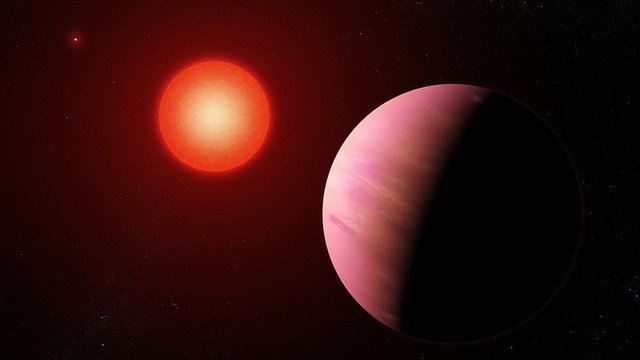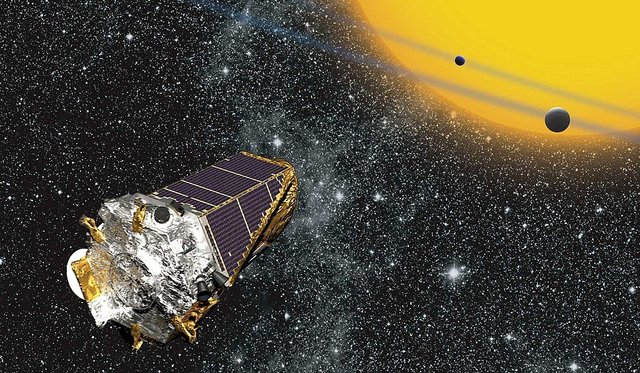The next exoplanet was discovered that could be fit for life
The recently discovered Planet outside the Sun called K2-288Bb is an interesting object. As the scientists suggest, it may be a rocky planet similar to Earth or a gas giant similar to those in our Solar System. Kepler's space telescope found this object 226 light-years from Earth.

By NASA's Goddard Space Flight Center/Francis Reddy link [Public domain]
The discovery of this system was announced by scientists from Citizen on January 7 at meeting of the American Astronomical Society in Seattle. This very remote world is in the system called K2-288. This system consists of two weak and cool stars. They are separated by a distance of about 5 billion kilometers. It's about six times the distance from the Sun to Jupiter. The brighter of the stars of this pair is probably half that smaller and less massive than our Sun. The second star of the system is about one third of the mass and size of the Sun. It also has significantly lower brightness. The title planet K2-288Bb circling around a smaller star. This planet circles its star every 31 days. The research shows that the exoplanet is located in the optimal zone of the star, which means that it can have a surface temperature that allows liquid water to occur there, which is a key element to the possibility of life.

By NASA Ames/ W Stenzel link [Public domain]
This object was discovered thanks to the mission of the Kepler Space Telescope. Scientists were mainly looking for periodic changes in star brightness. On this basis, it can be stated that a given star has an exoplanet that periodically passes before the star, causing its brightness to decrease. This phenomenon is called transit. In May 2017, scientists observed a third transit, confirming the presence of an Earth-sized exoplanet in the K2-288 system. The researchers compared the data obtained from the Kepler mission with data from the NASA Spitzer space telescope and the Gaia mission of the European Space Agency. This finally confirmed the new discovery. The nine-year mission of the Kepler telescope has led to the discovery of more than 2,600 planets outside our Solar System.


This post has been voted on by the SteemSTEM curation team and voting trail in collaboration with @curie.
If you appreciate the work we are doing then consider voting both projects for witness by selecting stem.witness and curie!
For additional information please join us on the SteemSTEM discord and to get to know the rest of the community!
Nice to know but we are still alone in the universe.
Personally, I think that it is not possible for life to develop only on Earth. Life in the universe can be universal. The question is how often it has the opportunity to evolve into intelligent forms like on Earth.
Alone in the sense the distance would be so great we could never touch each other.